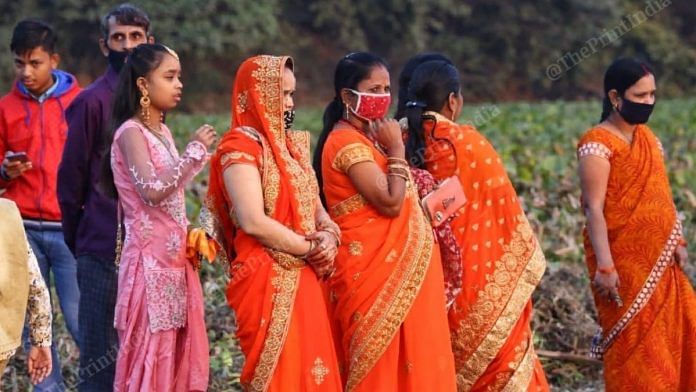
Thank you dear subscribers, we are overwhelmed with your response.
Your Turn is a unique section from ThePrint featuring points of view from its subscribers. If you are a subscriber, have a point of view, please send it to us. If not, do subscribe here: https://theprint.in/
Of traditions and customs; cut jeans and sneakers.
The evidenced fact that “Change is the only constant thing” is explained in many verses in Bhagavad Geeta. For those who may feel this is a “religious” statement, the Greek Philosopher of about 500BC, Heraclitus, also had said “The only thing permanent is change.” As a corollary, there will always be resistance to change because of fear of the unknown, additional expenses and in these times the meaningless, ubiquitous, political expediencies. Yet, change is pervasive. My newly married niece, who had just shifted to my town Bangalore, was visiting us for the weekend. We welcomed the girl, who was dressed in “cut” jeans and tank tops and her freshly minted husband in shorts, tee and sneakers, with open arms. Vijay was an alumnus of IIM, Ahmadabad and held a top executive position in one of the leading companies in the city. The children had come on a Friday to spend the weekend with us and so Vijay had to attend office that day in person; it was the pre-corona era. Anjali had taken the day off. I was expecting Vijay to change into formal clothes for office and of course he did no such thing. He said, he was already dressed for office. “Inconceivable”, for many, shall we say. But then, that is the norm in many new age companies, I was told. Forget my Army days, even in the MSME, I had set up later, the dress code was at least the usual casual – pants and shirt. So much for change. Cut back to year 2003, in a setting for an Army dinner. We were all in our Blue Patrols, a formal dress with a lot of accoutrements. At the pre-dinner gathering in the ante room, that evening some of us Keen Kumars were gathered around our Commander. Senior officers of the Indian Army were making small talk. A colonel in a tight fitting patrol broached the subject of the futility of ceremonial dresses, with all the accoutrements, in these ‘modern’ times. His discomfiture in the dress carried through from his lieutenant days was obvious. The General looked at the Colonel and then with a sweeping glance at all of us gathered around asked – “How do I stand out in this crowd without my epaulettes and accoutrements? If I do not wear them I will not be recognized as your Commander and as your leader, whereas a Lalu Prasad Yadav will be recognized as a leader even in his vests! The “Lalu” comparison here is figurative and not literal. Yearning for change among the soldiers was apparent even then – with generational shift. A resplendent adornment was no replacement for leadership traits. We tend to confuse traditions and customs. Traditions refer to aspects like courage, valour, integrity, sincerity, responsibility and the like which do not take material forms. Armies and units inculcate these traditions as part of training and everyday conduct. That is what makes for great armies. Customs, on the other hand refer to material aspects and are transitory, much like wearing shorts to a corporate office. These are transitory and mandatorily change with time and passing generations. For instance, the Rajputs are as great a warrior class whether riding a horse wearing leggings or a battle tank adorned in olive green, a sign of changing times. In a traditionally military family, the grandfather who fought in WWI would always remember the Raj with nostalgia. Not so the father who joined the British Indian Army and wholly aligned with the evolution of Indian independence. He would view the Raj differently. The present and future generations, born in independent India, will view the customs differently. These new kids on the block have been brought up without the baggage of history, oppression and foreign rule to clutter the mind. It is a different India, which dares to dream, and unlike past generations, dares to dream big. The young men and women joining the forces today do not need motivation from colonial legacies. On the contrary they may be distractions. History must be recorded and remembered, but we must accept the wishes of a new generation to shed the customs introduced by our colonisers. This had to happen one day and maybe the time for change has come. We must adopt alternatives which are locally contemporary and appeal to the youth of the day. Customs are introduced for a specific time and space. They become useless after expiry of their shelf life – everything has one. Persisting with these now meaningless customs under an illusion that they now serve a purpose is like using expired medicines; just as useless. Traditions have to be perpetuated and not customs. Tailpiece: Look around you, you will see only change. Let us embrace change and move on. Nieces and daughters will love and respect you more in “cut” jeans than in a “goonghat”.
These pieces are being published as they have been received – they have not been edited/fact-checked by ThePrint.

COMMENTS